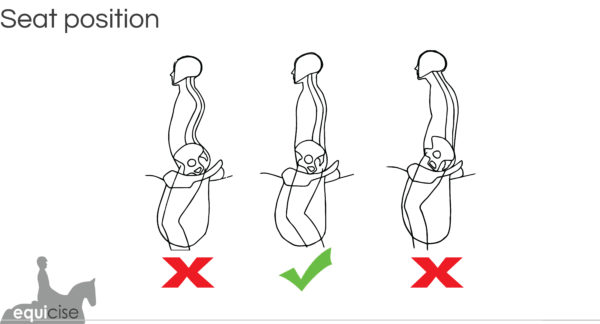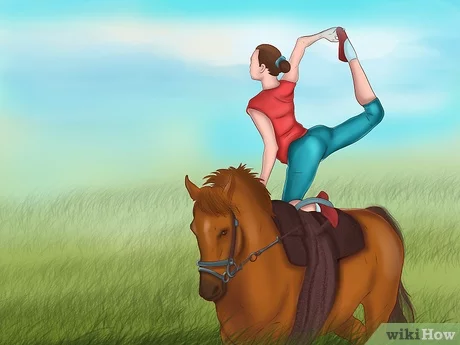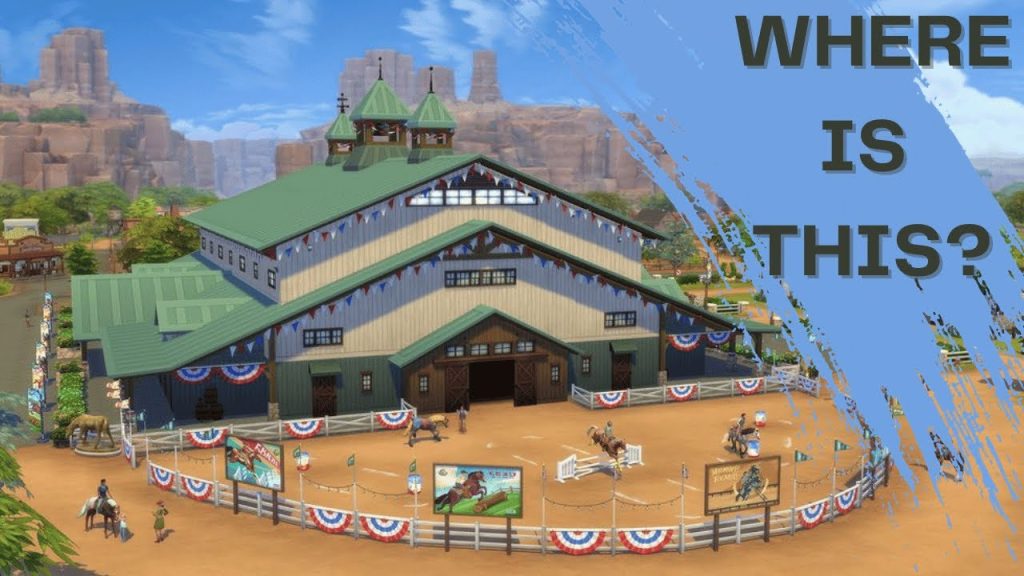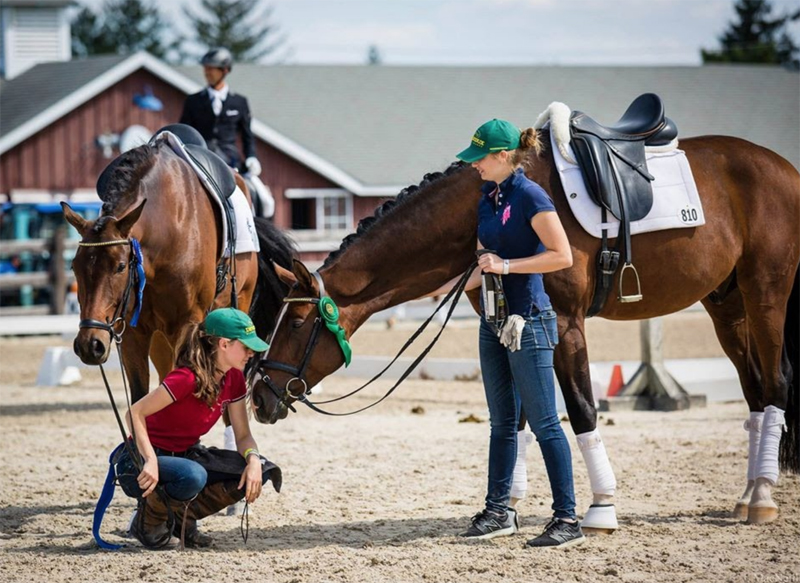Dreaming of riding horses and becoming an equestrian? It’s a journey that anyone can start with the right steps.
Learning to become an equestrian involves dedication and passion. You will discover a new world filled with majestic horses and thrilling rides. It’s not just about riding; it’s about understanding and bonding with these incredible animals. Whether you aim to compete or enjoy leisurely rides, becoming an equestrian is a rewarding adventure.
You’ll need to learn the basics, find a good instructor, and practice regularly. This guide will help you begin your journey into the equestrian world. Get ready to saddle up and ride towards your dream!
Introduction To Equestrianism
Equestrianism is a fascinating world where humans and horses work together. It is both an art and a sport. If you love horses and enjoy riding, this might be the perfect activity for you. In this blog, we will explore the basics of equestrianism.
What Is Equestrianism?
Equestrianism involves riding, driving, and training horses. It includes various activities like show jumping, dressage, and eventing. It is a popular sport worldwide and has been part of the Olympics since 1912. Riders and horses must have a strong bond and understanding.
History And Evolution
The history of equestrianism dates back to ancient times. Horses were first domesticated around 4000 B.C. They were used for transportation, work, and war. Over time, people began to ride horses for pleasure and competition.
| Period | Development |
|---|---|
| Ancient Times | Domestication and use in war |
| Middle Ages | Knighthood and jousting |
| Modern Era | Olympic sport and various disciplines |
In the Middle Ages, equestrian skills were essential for knights. They participated in tournaments and jousting. This period enhanced the techniques and skills of horse riding.
In the modern era, equestrianism has evolved into a structured sport. It includes different disciplines and is governed by strict rules. The International Federation for Equestrian Sports (FEI) oversees international competitions and ensures fair play.
Equestrianism requires dedication and practice. Both horse and rider must train hard to excel. It offers a unique blend of physical activity, mental challenge, and the joy of working with a noble animal.

Credit: www.wikihow.pet
Benefits Of Horse Riding
Horse riding offers numerous benefits, making it a rewarding activity. Riders experience improvements in both physical and mental health. Let’s explore the benefits of horse riding.
Physical Health Benefits
Horse riding is a great workout for the body. It helps build core strength, as riders need to maintain balance. This activity also improves coordination and flexibility. The act of controlling a horse requires a lot of muscle engagement. Riders often see an increase in muscle tone and strength.
Another benefit is cardiovascular health. Riding at a trot or canter can raise your heart rate. This helps improve your heart and lung function. Regular riding can help with weight management. It burns calories and can be a fun way to stay fit.
Mental And Emotional Benefits
Horse riding is not just good for the body. It also offers mental and emotional benefits. Spending time with horses can reduce stress and anxiety. Many riders find that the bond with their horse brings a sense of peace. The rhythmic motion of riding can be calming and meditative.
Another key benefit is the boost in confidence. Learning to ride and handle a horse builds self-esteem. Riders often feel a sense of accomplishment as they master new skills. Horse riding also teaches patience and discipline. These traits can be beneficial in other areas of life.
| Physical Health Benefits | Mental and Emotional Benefits |
|---|---|
| Builds core strength | Reduces stress and anxiety |
| Improves coordination and flexibility | Boosts confidence |
| Increases muscle tone | Teaches patience and discipline |
| Improves cardiovascular health | Provides a sense of peace |
| Helps with weight management | Calming and meditative |
Choosing The Right Horse
Choosing the right horse is crucial for your equestrian journey. A good match between rider and horse ensures safety and enjoyment. This decision can impact your riding experience positively or negatively.
Factors To Consider
Several factors help in choosing the right horse. First, think about your riding skills. Beginners need calm and well-trained horses. Experienced riders can handle spirited horses.
Next, consider the horse’s age. Younger horses have more energy but need training. Older horses are usually calmer and more predictable.
Also, assess the horse’s health. A vet check is essential. Ensure the horse is free of injuries and diseases.
Finally, think about the horse’s size. It should match your height and weight. A mismatched size can cause discomfort for both rider and horse.
Different Horse Breeds
Different breeds have unique traits. Knowing these can help in making the right choice.
For beginners, the Quarter Horse is a popular choice. They are calm and easy to train. They are also versatile and good for various riding styles.
The Arabian horse is known for its endurance and speed. They are suitable for experienced riders. They need regular exercise and training.
Thoroughbreds are famous for their speed and agility. They are often seen in racing and jumping events. They require a confident and skilled rider.
Ponies are great for children and smaller adults. They are friendly and easy to handle. Ponies are also ideal for learning basic riding skills.
Remember, each horse is unique. Spend time with different horses before making a choice. This helps in finding the perfect match for your equestrian needs.

Credit: www.equicise.co.uk
Essential Riding Gear
Becoming an equestrian is an exciting journey. To start, you need the right gear. Essential riding gear ensures your safety and comfort while riding. Each piece of equipment plays a crucial role. Let’s dive into the essentials.
Safety Equipment
Safety equipment is the most important part of your riding gear. It protects you in case of falls or accidents. Here are the key items:
- Helmet: A riding helmet is a must. It protects your head from injury. Always choose a certified helmet.
- Body Protector: This gear protects your chest and back. It absorbs impact if you fall.
- Riding Boots: Boots with a heel prevent your foot from slipping. They also protect your feet.
- Gloves: Riding gloves improve your grip on the reins. They also protect your hands from blisters.
Comfortable Clothing
Comfort is key when riding. Wearing comfortable clothing helps you move freely. Here are the essentials:
- Riding Pants: Also known as breeches or jodhpurs. They are stretchy and fit snugly. This allows for better movement.
- Shirt: Wear a comfortable, fitted shirt. It should not be too loose. This prevents it from getting caught on anything.
- Jacket: A lightweight, fitted jacket is ideal. It keeps you warm without restricting movement.
- Socks: Long, comfortable socks are a must. They prevent rubbing and blisters from boots.
Having the right gear makes your riding experience safer and more enjoyable. Start with these essentials and you’ll be well on your way to becoming an equestrian.
Basic Riding Techniques
Basic riding techniques are essential for anyone starting their equestrian journey. These techniques ensure safety, control, and communication with your horse. They form the foundation for more advanced riding skills.
Mounting And Dismounting
Mounting a horse requires practice and patience. Stand by the horse’s left side. Hold the reins in your left hand. Place your left foot in the stirrup. Push off the ground with your right foot. Swing your right leg over the horse’s back. Gently sit down in the saddle.
Dismounting is just as important. Remove your feet from the stirrups. Lean forward slightly. Swing your right leg over the horse’s back. Use your left hand for balance. Step down gently with your right foot first.
Maintaining Proper Posture
Proper posture ensures balance and effective communication with the horse. Sit up straight in the saddle. Keep your shoulders back. Your weight should be evenly distributed. Your legs should be relaxed but firm. Maintain contact with the horse’s sides.
Your hands should hold the reins lightly. Keep your elbows close to your body. Look ahead, not down. This helps you anticipate the horse’s movements. Proper posture helps prevent fatigue and injury.
Training And Lessons
Becoming an equestrian is an exciting journey. Training and lessons are key components. These steps help you develop essential skills. It’s important to find the right guidance and practice regularly.
Finding A Qualified Instructor
Finding a qualified instructor is crucial. Look for experienced professionals. They should have a solid background in horseback riding.
- Check their credentials.
- Read reviews from other students.
- Observe a few lessons.
Choose an instructor who matches your learning style. This ensures a productive and enjoyable experience. A good instructor will be patient and knowledgeable.
Types Of Riding Lessons
There are various types of riding lessons. Each type focuses on different skills and techniques.
| Lesson Type | Description |
|---|---|
| Private Lessons | One-on-one sessions with personalized attention. |
| Group Lessons | Sessions with multiple students, fostering a social environment. |
| Trail Riding | Outdoor rides focusing on navigating different terrains. |
| Dressage Lessons | Training in precise movements and commands. |
| Jumping Lessons | Learning to jump over obstacles with confidence. |
Choose the lesson type that aligns with your goals. Private lessons offer personalized feedback. Group lessons provide a supportive community. Trail riding builds confidence in natural settings.
Dressage and jumping lessons enhance specific skills. Consistent practice is key. Stay committed and enjoy the journey.
Caring For Your Horse
Caring for your horse is a rewarding responsibility. Your horse depends on you for its well-being. A strong bond forms when you provide proper care. Let’s explore essential aspects of horse care.
Daily Care Routine
A horse’s daily routine is vital. Start with a morning check. Ensure your horse is healthy and happy. Clean the stable, removing any soiled bedding. Refill water buckets with fresh water. Groom your horse to keep its coat clean and shiny. Inspect hooves daily to avoid infections.
Regular exercise is important too. Take your horse for a ride or let it roam freely. This keeps it fit and prevents boredom. Always end the day with another check. Ensure your horse is comfortable and secure for the night.
Nutrition And Feeding
Nutrition is key to a horse’s health. Provide a balanced diet. Hay and pasture grass are primary food sources. They should be clean and free from mold. Grain can supplement the diet, but don’t overfeed. Consult a vet for the right amount.
Fresh water is essential. Your horse needs it throughout the day. Salt and mineral blocks provide necessary nutrients. Avoid sudden changes in diet. Gradual changes prevent digestive issues. Monitor your horse’s weight and adjust the diet as needed.
Joining The Equestrian Community
Joining the equestrian community is a wonderful way to deepen your love for horses. It also allows you to meet like-minded individuals who share your passion. You’ll find support, friendship, and endless learning opportunities within this vibrant community.
Local Riding Clubs
Local riding clubs are a great place to start. These clubs offer lessons for all skill levels. You can learn the basics or improve your advanced techniques. Clubs often host social events where you can meet other horse enthusiasts. They also provide access to experienced trainers and well-trained horses.
Competitions And Events
Competitions and events are exciting ways to immerse yourself in the equestrian world. Local shows are perfect for beginners. They are less intimidating and more relaxed. Larger events offer a chance to see skilled riders in action. You can learn a lot from watching these competitions. Participating in events helps you gain confidence and improve your skills.
Advanced Riding Skills
Becoming an equestrian is a rewarding journey. Reaching advanced riding skills opens a new world of challenges and achievements. Mastering these skills requires dedication and practice. Let’s dive into some advanced techniques that will elevate your riding experience.
Jumping Techniques
Jumping is an essential skill for many equestrians. Here are some key points:
- Approach: Maintain a steady pace. Your horse should be balanced and calm.
- Take-off: As your horse approaches the jump, slightly lean forward. Give your horse space to lift.
- In the air: Keep your eyes up. Allow your hands to follow the horse’s mouth.
- Landing: Absorb the landing with your knees. Return to a balanced position quickly.
Practicing these steps helps you and your horse jump smoothly.
Dressage Basics
Dressage focuses on the horse’s movement and rider’s control. Here are some basics:
- Posture: Sit tall. Keep your back straight and shoulders relaxed.
- Leg Aids: Use your legs to guide the horse. Apply gentle pressure.
- Hand Aids: Keep a light contact with the reins. Your hands should be steady but flexible.
- Transitions: Practice moving between gaits smoothly. Maintain rhythm and balance.
Understanding these basics improves your dressage performance. Consistent practice is key.
Remember, advanced skills take time to master. Patience and persistence are your best allies in the journey to becoming a skilled equestrian.

Credit: www.tiktok.com
Overcoming Challenges
Becoming an equestrian is an exciting journey, but not without challenges. Many aspiring equestrians face fears and insecurities. These challenges can feel overwhelming. But with the right mindset, they can be overcome. Let’s explore some common fears and how to manage them. Then, we’ll discuss ways to build confidence in your equestrian skills.
Common Fears And How To Manage Them
Fear of falling is common among new riders. It’s natural to worry about getting hurt. To manage this fear, start with basic riding lessons. Learn how to sit properly and stay balanced. Use safety gear like helmets and protective vests. These tools can help reduce the risk of injury.
Another common fear is the horse itself. Horses are large and powerful animals. Spend time around them to get comfortable. Grooming and feeding can build trust. Understand horse behavior and body language. This knowledge can help you feel more in control.
Building Confidence
Confidence is key to becoming a successful equestrian. Start with small, achievable goals. Celebrate each success, no matter how small. This will boost your confidence over time.
Practice regularly to improve your skills. The more you ride, the better you’ll get. Join a supportive riding community. Fellow riders can offer advice and encouragement.
Take lessons from experienced trainers. They can provide valuable feedback. They can also help you progress safely and effectively.
Remember, everyone starts as a beginner. Overcoming challenges takes time and effort. Stay patient and keep a positive mindset. You’ll become a confident equestrian before you know it.
Frequently Asked Questions
What Skills Do You Need To Become An Equestrian?
To become an equestrian, you need riding skills, horse care knowledge, and good physical fitness. Patience and dedication are also essential.
How Much Does It Cost To Start Equestrian?
Starting equestrian can cost between $1,000 and $3,000. This includes lessons, gear, and initial training.
How Long Does It Take To Learn Horse Riding?
Learning basic horse riding can take a few months. Mastery and advanced skills may take several years of practice.
What Are The Best Horse Breeds For Beginners?
Some of the best horse breeds for beginners include Quarter Horses, Morgans, and American Paint Horses. They are gentle and reliable.
Conclusion
Becoming an equestrian takes dedication and patience. Start small. Learn the basics first. Practice regularly. Build a bond with your horse. Safety is crucial. Always wear the right gear. Take lessons from a skilled instructor. Join a local riding club.
Enjoy the journey. Each ride teaches you more. Stay committed. Your skills will grow. Soon, you’ll ride with confidence. Embrace the equestrian lifestyle. It’s rewarding and fun. Happy riding!



